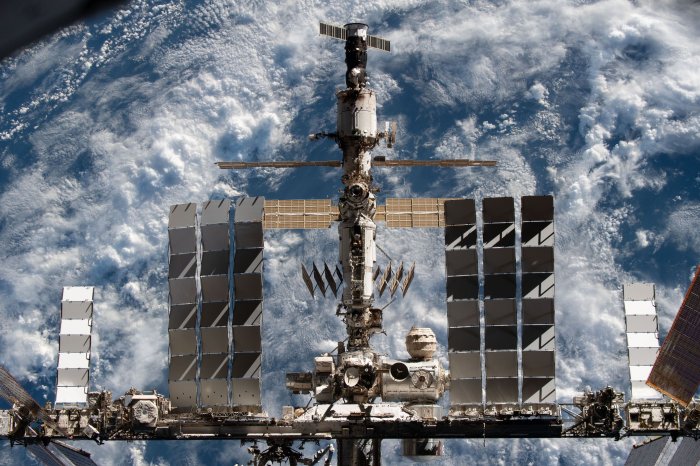Studying other galaxies -- such as UGC 10738, as imaged by the European Southern Observatory's Very Large Telescope in Chile -- has revealed that the Milky Way is relatively typical of the universe. Photo by Jesse van de Sande/European Southern Observatory
May 24 (UPI) -- It turns out the Milky Way isn't the product of a big, violent collision, new research says.
According to a study published Monday in the journal Astrophyiscal Journal Letters, Earth's home galaxy evolved slowly and relatively peacefully -- and researchers say that makes it a pretty average galaxy.
Being inside the subject matter complicates studies of the Milky Way, so astronomers often look to the galaxy's cosmic neighbors for context.
For the latest research, scientists gained insights into the Milky Way's evolutionary history by studying another spiral galaxy named UGC 10738, located some 320 million light-years from Earth.
Cross-sectional analysis of the galaxy revealed a familiar combination of thick and thin disks, much like those of the Milky Way.
Previously, astronomers estimated these disks were forged by a violent collision with a smaller galaxy. But their presence within UGC 10738 suggests the disks are more common that astronomers previously thought -- and likely the product of slow and steady evolutionary processes.
"Our observations indicate that the Milky Way's thin and thick discs didn't come about because of a gigantic mash-up, but a sort-of 'default' path of galaxy formation and evolution," study co-lead author Nicholas Scott said in a press release.
"From these results we think galaxies with the Milky Way's particular structures and properties could be described as the 'normal' ones," said Scott, a researcher at Australia's ARC Center of Excellence for All Sky Astrophysics in 3D.
Because the Milky Way's disks were thought to be formed by an unusual collision, they didn't expect to find the same feature in other spiral galaxies.
"Our research shows that's probably wrong, and it evolved 'naturally' without catastrophic interventions," Scott. "This means Milky Way-type galaxies are probably very common."
Proof that the Milky Way is a lot like other spiral galaxies can help astronomers make inferences about hard-to-see, faraway galaxies.
Likewise, astronomers can be more confident that insights from surveys of other spiral galaxies are applicable to Milky Way modeling efforts.
"This is an important step forward in understanding how disk galaxies assembled long ago. We know a lot about how the Milky Way formed, but there was always the worry that the Milky Way is not a typical spiral galaxy," study co-author Ken Freeman said in a press release.
"Now we can see that the Milky Way's formation is fairly typical of how other disk galaxies were assembled," said Freeman, a professor at Australian National University.
Scientists studied UGC 10738 using the European Southern Observatory's Very Large Telescope in Chile.
The observations showed the galaxy's thick disks are made up of ancient stars rich in helium and hydrogen, while its thinner layers feature much younger, metal-rich stars.
"Using an instrument called the multi-unit spectroscopic explorer, or MUSE, we were able to assess the metal ratios of the stars in its thick and thin discs," said study co-author Jesse van de Sande, also with the ARC Center.
"They were pretty much the same as those in the Milky Way -- ancient stars in the thick disc, younger stars in the thin one. We're looking at some other galaxies to make sure, but that's pretty strong evidence that the two galaxies evolved in the same way," van de Sande said.
The International Space Station is pictured from the SpaceX Crew Dragon Endeavour during a flyaround of the orbiting lab that took place following its undocking from the Harmony module’s space-facing port on November 8. Photo courtesy of NASA
















